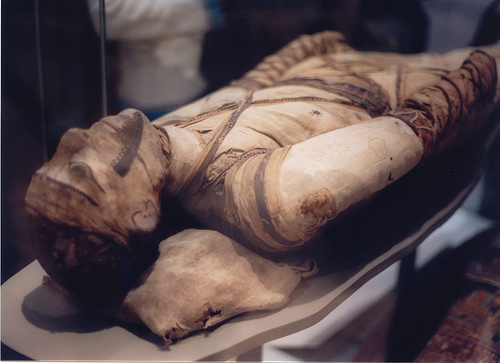The Cursed Mummy of the British Museum
There is nothing that sparks the imagination like a Mummy’s Curse, a curse that has wrought devastation and destruction across the centuries and around the globe. This particular curse revolves around the mummy case of a woman, believed to be a priestess at the temple of Amen-Ra. From the time that the artefacts were acquired in 1860 there have been a string of deaths and bad fortune for all who have been involved in the transportation and housing of this 3,500 year old relic excavated from a tomb in Luxor, Egypt.

A Trail of Devastation
From the moment that young archaeologist Thomas Murray, an Oxford graduate and his friends were shown the casket, Murray was determined to have it. The hieroglyphics revealed that the mummy was a High Priestess of Amen –Ra and he would have the casket shipped back to his home in London that very night. A couple of days later, while shooting ducks along the banks of the Nile River the gun that he was using exploded, bad weather hampered his journey back to Cairo and it took a total of ten days before he received any medical attention, by this time he had fallen victim to gangrene and he lost his arm. On that same journey to Cairo one of the friends he was travelling with died. Within months of the acquisition, two of the servants who had handled the casket died with another who had been reported to have made some unflattering remark about the priestess dying even sooner.
The Casket Comes to London
Upon returning home and finding the casket unwrapped, Murray noted at how the face of the priestess had seemingly changed from one of beauty and serenity to one will malevolent eyes and a sinister appearance. Many a spiritualist declared that there was an evil influence emanating from the painted casket. A reporter covering the story came into contact with the casket and soon lost her mother to a fall, her relationship collapsed, her pet dogs fell victim to distemper and she herself became ill.
Murray, now convinced that this painted effigy was in some way influencing his life passed it on to his friend, a Mr Wheeler who almost immediately experienced a run of severe misfortune and died soon after, the casket then passed to his sister whose life too took a serious downturn. The photographer charged with capturing images of the piece died soon after completing his commission. Soon after the casket was donated to the British Museum who assigned an Egyptologist to the artefact to decipher the hieroglyphics, he took the piece into his home to study and died soon after, his servants claiming that he had been unable to sleep since the effigy of the high priestess had entered the property.
The Deaths Continue
There have been many more deaths and tales of devastation relating to all those who have had contact with the casket, but she remains on display in the British Museum. There are no details of any curse or consequences displayed with her, but if you do look for her she is Mummy Board EA 22542 and is generally displayed in the first Egyptian room, Gallery 62 in Case 21.

